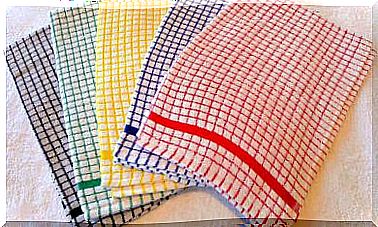Find Out Why Your Children Should Paint Mandalas
For some years now, it has become fashionable to paint mandalas. Mainly, because it is a relaxing activity, which helps to clear the mind and reduce stress. However, it also helps develop creativity and work other areas of the mind.
Both children and adults can enjoy this simple activity that has no rules, but rather to enjoy, letting the imagination fly and making different color compositions.
As this activity has been incorporated into the school environment as an educational resource, to enhance the concentration of students, below we will tell you more about the reasons why your children should paint mandalas.
Painting mandalas: the art of the circle
Carl Gustav Jung (Swiss doctor and psychologist) said that a mandala (which in Sanskrit means ‘circle’) reminds us of that essential – and transcendental – figure that represents balance and perfection.
He also pointed out that, for Buddhists, the mandala, through its circular shape, helps to ‘structure’ the interior. In general terms, they understand that fantasy, movement and magic take place within the circle, and that outside of it, there would be chaos.
For this reason, painting mandalas invites us to create, imagine and find harmony ‘in disorder’. This is beneficial for people of any age in times of stress or emotional tension.
A strategy to enhance concentration
If we add the visual appeal of mandalas to the natural fascination of children for colors and for the exercise of coloring itself, an ideal combination is immediately achieved to stimulate various cognitive processes.
- When they paint, the children are silent and concentrate. However, there are mandalas of greater or lesser complexity, and the greater the diversity, the greater the cognitive processes that apply: attention, flexibility, imagination, etc.
- A mandala is an activity that must be completed in order for it to provide benefits. In fact, kids know it, and they’ll wait to finish it so they can proudly show it to you.
- In a way, painting mandalas also motivates the child to strive to complete the activity and obtain a good result, which is very positive in many respects.
Discover: How to develop a child’s emotional intelligence
Allies for children with special needs
Today, many educators and pedagogues make use of mandalas in special education classrooms as support therapy.
They are a very useful resource to help children with Down syndrome or autism. It allows them to relax, control stereotyped movements and find a channel of expression that is more than fabulous.
On the other hand, children with ADHD (attention deficit disorder with or without hyperactivity) enjoy this exercise a lot, because it allows them to reinforce their ability to achieve, while it relaxes them and allows them to reduce anxiety.
Benefits of painting mandalas
Painting mandalas is an activity that provides a great maturational benefit for children’s brain health for the following reasons:
- Enhance hand-eye coordination.
- The ‘smart clamp’ of those fingers allows it to also improve many of those brain connections that children between 2 and 8 years old must gradually but constantly enhance.
- By extension, the activity facilitates fine motor skills and the learning of other activities such as writing, as well as how to manipulate various objects, such as shoes, for example.
- Helps improve concentration. This helps them to be more willing to pay attention on a day-to-day basis and, therefore, they will be able to better discriminate stimuli.
Is it correct to integrate the art of painting mandalas into the routine?
Painting mandalas should not be an obligation or an activity that must be done at a certain time. Otherwise, it would stop enhancing creativity and promoting relaxation.
Although everything will depend on each child, in general, it is not advisable to put them to paint right after homework. It is important that there is a pause, so that the child does not interpret the activity as another duty.
On the other hand, it is necessary to take into account what has been worked in class. For example, if the child painted mandalas in his class, it is not recommended that he do it again at home the same day – unless he wants to – so that he does not get saturated.
To maintain interest in the activity, it is advisable to vary the design of the mandalas. In this way, the child will not get bored easily and will feel more motivated to complete the coloring.
You have to allow the children themselves to choose the mandalas that they are most interested in coloring. There are prints with animals, stars, trees and much more, in addition to the more traditional designs.
It is advisable to also provide mandala designs that are not suitable for their age and, little by little, increase the complexity of the designs. In this way, the activity will be interesting.
Better with pencils or markers?
As we mentioned at the beginning, there is no rule when carrying out this activity. Not even when it comes to tools. Everything will depend on the tastes and the elements that each person has available.
To conclude, remember that on the internet you can find various places where you can download various designs of mandalas to color for free.









